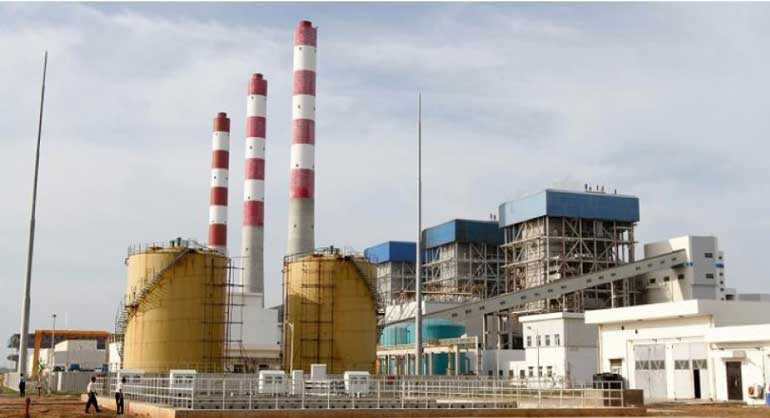Sunday Jan 05, 2025
Sunday Jan 05, 2025
Saturday, 28 September 2019 00:08 - - {{hitsCtrl.values.hits}}

Norochcholai Lakvijaya coal power plant
Moves by the Ministry of Power and Energy to carry out a 300MW expansion project in the Norochcholai Lakvijaya coal power has drawn fresh criticism from industry stakeholders.
The Cabinet this week granted approval to expand the Norochcholai facility to add another 300MW coal power plant to the existing facility with sanctions to seek a new loan from China following a proposal presented by Power and Energy Minister Ravi Karunanayake.
The approval comes despite a global trend to move away from coal and a national policy to focus on the least cost generation method.
New 300MW...
“The world is turning away from coal. Last week saw millions of young people take to the streets on a climate strike to fight for their future and halt climate breakdown. We have floods in the south of the country induced by warming. It is ironic that the Cabinet and the Minister decided that Sri Lanka needs more coal power,” noted one energy activist who spoke to Daily FT on condition of anonymity.
The Minister, via the Cabinet paper seen by Daily FT, informed the Cabinet that although generally the construction of a coal power plant took at least five to seven years due to the processes that needed to be followed to obtain feasibility studies, environmental impact assessments, and environmental and other construction approvals needed, this project could be completed within two to three years, implying that such assessments and approvals were not required for an extension project.
However, experts familiar with the provisions of the Electricity Act noted that even an extension to an existing facility required obtaining of fresh approvals relevant to building a new plant.
The Norochcholai plant has been under scrutiny for emitting toxic gases beyond permissible levels with filtration systems in place being either completely or partially out of order, as highlighted by a recent report done by the Industry Technology Institute (ITI). The current facility also holds a troubled track record with constant breakdowns affecting the power supply of the country.
The paper also recommends to invite China Machinery Engineering Corporation (CMEC) to build the plant “as an extension to the existing power plant on Engineering Procurement and Construction (EPC) basis considering the fact that the China Machinery Engineering Corporation has carried out the construction of the existing power plant on the nomination of the Government of the People’s Republic of China”.
Further, the paper recommends obtaining a loan from Exim Bank of China on preferential loan rates to cover the total cost of the plant to be completed in three phases. The Minister however has informed the Cabinet that the CMEC has already commenced the feasibility study for the plant.
The proposal to build the plant has been made by the Ceylon Electricity Board General Manager, via a letter to the Minister informing that the CEB has already commenced a jointed detailed study on the proposed extension with the design company and the main contractor of the existing plant after an 11-member committee recommended that “1x300MW extension could be possible within the same premises of the existing Lakvijaya Power plant with common auxiliary systems”.
Further the CEB has noted that the plant identified in year 2023 long-term generation energy plan “could be considered as the proposed extension”.
However, according to officials familiar with the provisions of the Electricity Act, and process followed in obtaining approval from the Public Utilities Commission of Sri Lanka, plants not identified in an approved long-term generation plan cannot be included in the energy mix without approval from the regulatory body.
The proposed extension has not received the approval of the PUCSL and has not been included in the LTGEP submitted by the CEB.